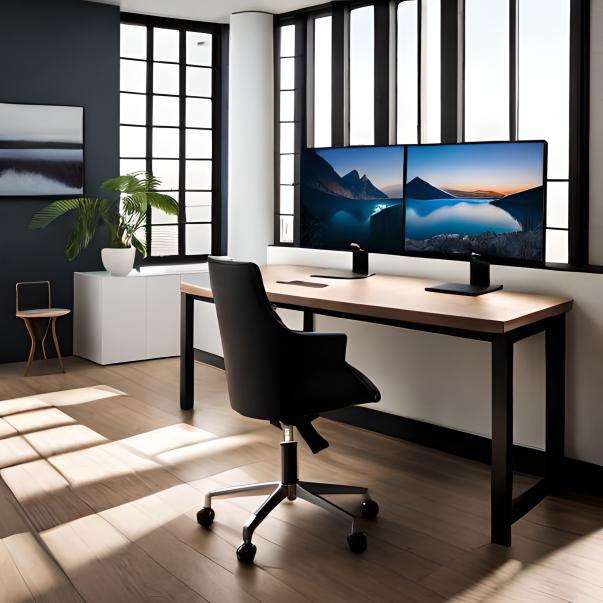Elevate your productivity and multitasking skills by setting up two monitors with your laptop. Not sure how to do it? Here’s a simple guide to get you started.
The Benefits of a Dual Monitor Setup
A dual monitor setup is a game-changer. You can drag multiple applications across screens, compare documents side-by-side, or simply watch a movie on one screen while working on the other. The possibilities are endless!
What You Need Before You Begin
- Suitable Laptop
Ensure your laptop supports multiple external displays. Check your laptop’s specifications or manual.
- Required Cables and Ports
Most modern laptops will have HDMI, DisplayPort, USB-C, or mini DisplayPort. Get the corresponding cables. For older connections, like VGA, you may need adapters.
- Two Monitors
Any two monitors will do, but for a seamless experience, identical or similar models are ideal.
Setting Up Your Dual Monitor Configuration
- Connecting the Monitors
- Connect the first monitor to the laptop using the appropriate cable.
- For the second monitor, if your laptop has another display output, use it. If not, consider using a docking station or USB to HDMI adapter.
- Configuring Display Settings on Windows
- Right-click on the desktop and select “Display settings.”
- Scroll down to the “Multiple displays” section.
- Choose how you want to use the two monitors: Duplicate (same content on both), Extend (continuous screen across both), Second screen only, or First screen only.
- Apply and enjoy your dual screens!
- Configuring Display Settings on macOS
- Go to System Preferences > Displays.
- Click the “Arrangement” tab.
- Drag the display icons to organize them as you wish.
Tips for Optimizing Your Dual Monitor Setup
- Ensure both monitors are at the same height and angle to avoid neck strain.
- Use wallpapers or tools that span across both screens.
- Organize your workspace; decide which monitor is primary (for main tasks) and which is secondary (for auxiliary tasks).
Troubleshooting Common Issues
- If one screen isn’t detected, ensure the cables are firmly connected.
- For color or resolution mismatches, adjust settings individually for each monitor.
- Driver updates can solve many display issues. Check the manufacturer’s website.
Conclusion
Using two monitors with a laptop is a significant boost to efficiency and enjoyment. Once you go dual-screen, you’ll wonder how you ever managed with just one!
FAQs
- Can I set up two monitors with any laptop?
- Not all laptops support dual external displays. Check your laptop’s specs or manual.
- Do the two monitors have to be the same brand or size?
- No, but similar models ensure a more cohesive experience.
- Can I use my laptop screen as one of the two displays?
- Absolutely! Many users prefer the laptop screen as one and an external monitor as the second.
- What if the text or apps look too small/large on one monitor?
- You can adjust the scaling for each monitor in the display settings.
- Do I need special software to run a dual monitor setup?
- Typically, no. Modern operating systems like Windows and macOS support multi-monitor setups natively.

Leave a Reply
You must be logged in to post a comment.